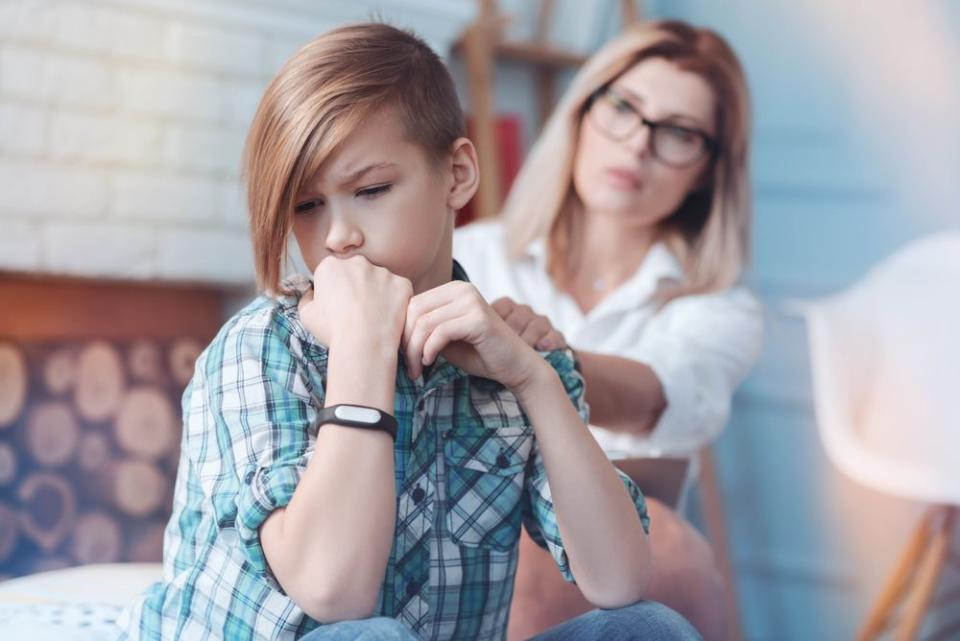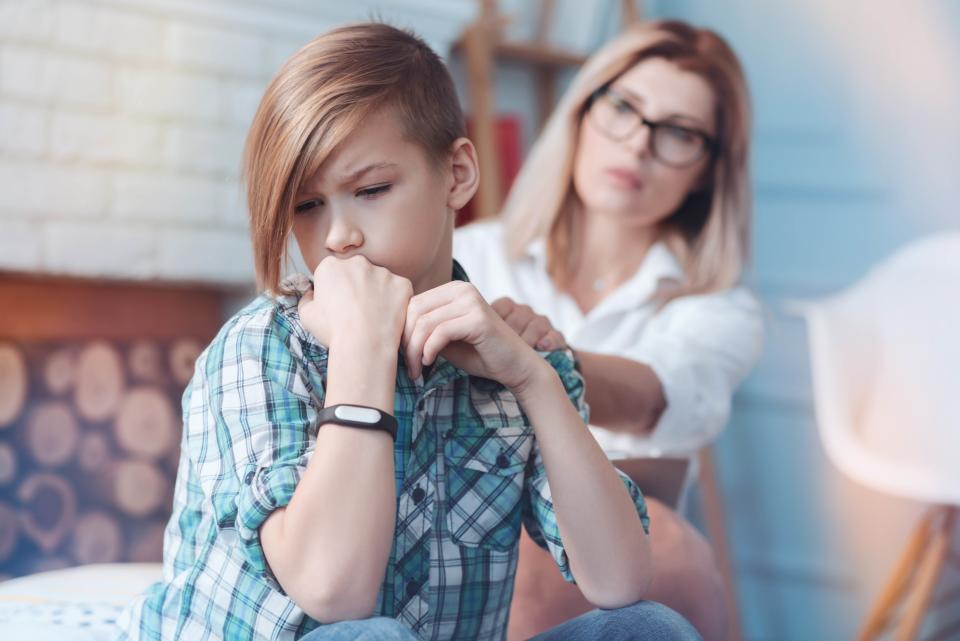New Study Encourages Parents To Let Anxious Children Face Their Fears

A study currently underway at Yale hopes to develop new treatment options for children with anxiety that focus on the parents, not the child.
According to the CDC, about 7 percent of kids aged 3-17 have been diagnosed with an anxiety disorder. That's almost 4.5 million kids in the United States. Traditional therapy includes cognitive behavioral therapy (CBT), which has been used successfully in adults living with depression and anxiety. In CBT, the goal is a mindful approach to a change in behavior, but training parents in CBT for their children has proved less effective than doctors had hoped.
Now a new training technique is being studied. When faced with an anxious child, most parents will accommodate those fears and rush to provide comfort. Study author, Eli Liebowitz, tells NPR, "These accommodations lead to worse anxiety in their child, rather than less anxiety." Because the child depends on the parent for comfort and soothing, they never learn the coping mechanisms necessary to self-soothe and reinforce that there is something to fear. "When you provide a lot of accommodation, the unspoken message is, 'You can't do this, so I'm going to help you,' he says.
RELATED: How to Help Your Anxious Child
Instead, Dr. Liebowitz, believes training parents to encourage children to face their fears might be the key to helping kids heal from anxiety without ever seeing a therapist themselves.
The treatment, called Supportive Parenting for Anxious Childhood Emotions (SPACE), teaches parents to be supportive and acknowledging of their child's anxiety without providing the accommodations the child may have come to depend on. By acknowledging the fear, but not accommodating it, the child begins to learn to self-soothe, facing their fears and dealing with them on their own. In his NPR interview, Leibowitz stressed the importance of making "children feel heard and loved, while using supportive statements to build their confidence. Parents need to show their child that they understand how terrible it is to feel anxious," he says. "They need to accept that their child is genuinely anxious and not just being attention seeking," he adds.
Training parents to acknowledge their child's fear and explain to children that '"they can tolerate that anxiety and they don't need to be rescued from it," is empowering for children and gives them the confidence to face their fear knowing that their parent is nearby. By utilizing statements like "I understand that you're afraid, but I know you can do this," parents provide acknowledgment of the fear without the accommodation of saying something like "I'll stay right here with you until you fall asleep."
This method can be difficult for parents who were raised with the "just get over it" mindset, which minimizes the child's fear and can lead to feelings of inadequacy. The goal of SPACE is to give the child room to feel the fear while feeling supported enough to deal with it directly. Praising children for accomplishing an anxiety-inducing task despite their fear helps them build the confidence necessary to continue moving forward, facing their fears and overcoming them, instead of bottling those fears up and running the risk of them increasing.
Leibowitz' study is showing promising results. Seventy percent of children enrolled in the study had no symptoms of anxiety by the end of the study and while further research is necessary, the preliminary results may provide hope to families of anxious children who have not had success in easing their children's fears.


